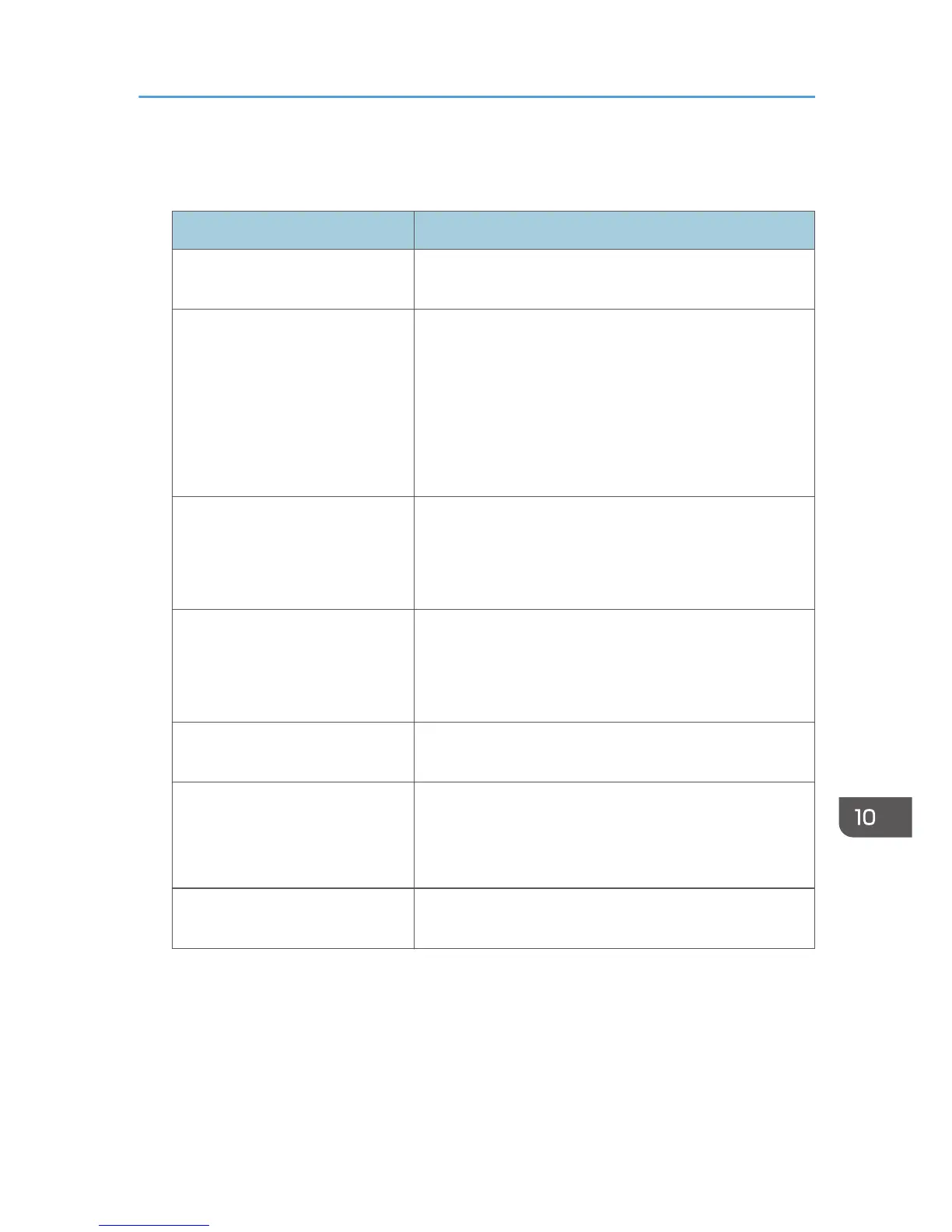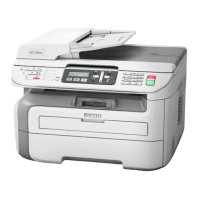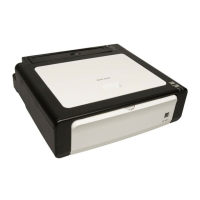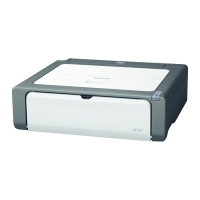When other problems occur
The table below describes how to troubleshoot problems that do not produce an error code.
Problem Solution
Cannot send faxes. Confirm the error code, and then perform the appropriate
procedure to resolve the problem.
Cannot receive faxes even when
sending them is possible.
• A print cartridge is empty. Replace the print cartridge.
See page 119 "Replacing the Print Cartridge".
• The input tray is empty. Load paper in the input tray.
See page 30 "Loading Paper".
• If fax reception mode is manual mode, you must
receive the fax manually. See page 90 "Receiving a
Fax".
Cannot print received faxes. • The input tray is empty. Load paper in the input tray.
See page 30 "Loading Paper".
• The input tray does not contain paper of the right size.
Load paper of the right size in the input tray.
Faxes you sent appear spotty or
dirty when received.
• The exposure glass or ADF is dirty. See page 124
"Cleaning the Auto Document Feeder".
• Before placing originals on the exposure glass, make
sure that ink or correction fluid is dry.
A fax you sent appears blank
when received.
The original was placed upside down. Place the original in
the correct orientation. See page 36 "Placing Originals".
Dirty spots may appear, or an
image from the reverse side shows
through copy received by the
recipient.
Image density is too high. Adjust the image density.
Dial fails when trying to send
faxes.
Confirm the error code, and then perform the appropriate
procedure to resolve the problem.
Fax Problems
139

